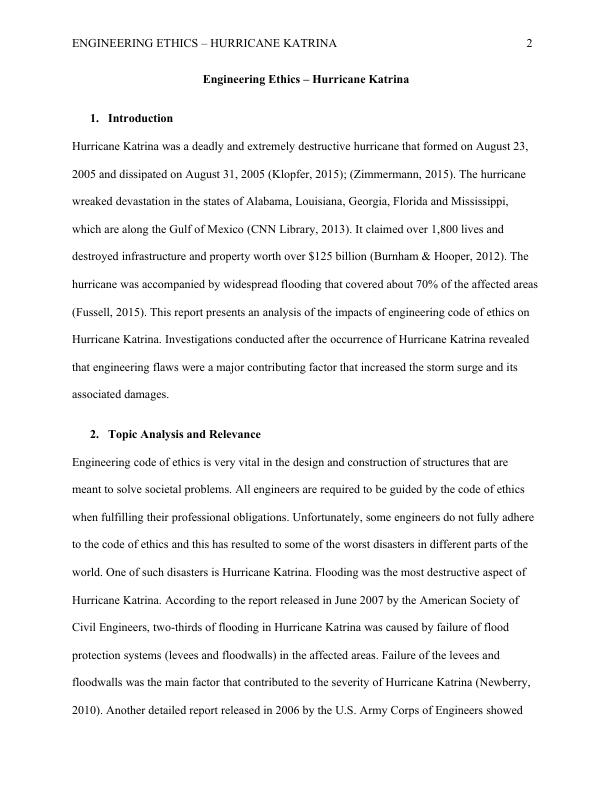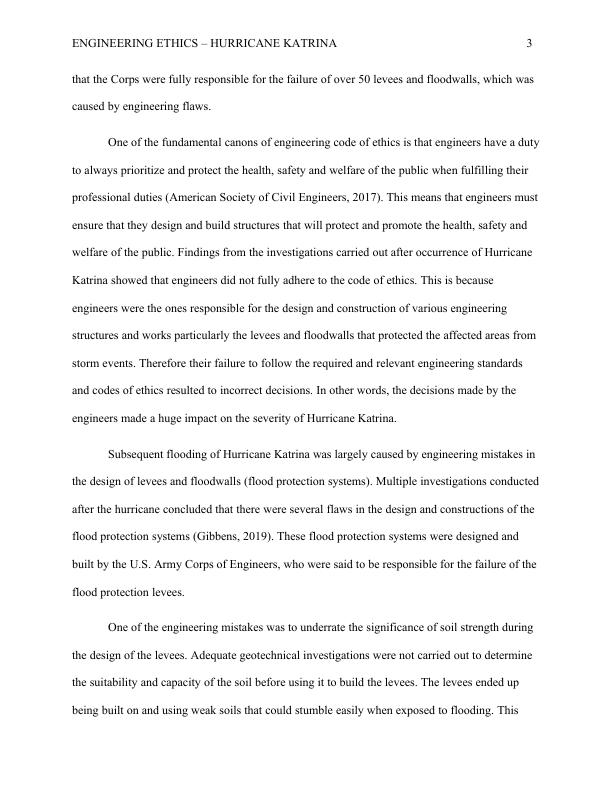Engineering Ethics - Hurricane Katrina Introduction Hurricane Katrina
Added on 2022-05-11
10 Pages2755 Words357 Views
End of preview
Want to access all the pages? Upload your documents or become a member.
HURRICANE KATRINA ENGINEERING ETHICS - HURRICANE KATRINA Name Course Professor University City/state Date 1 ENGINEERING ETHICS - HURRICANE KATRINA 1 Engineering Ethics - Hurricane Katrina
|10
|2845
|405
WENG100 – Introduction to Engineering | Failures in civil engineering
|6
|1638
|49
Report on Analysis of Hurricane Katrina
|6
|1598
|55
Engineering Challenges of Katrina - A Case Study for Study of Engineering Ethics
|17
|3923
|1
Engineering Innovation and Ethics, Research Assignment
|14
|2954
|398
Engineering Innovations and Ethics - Hurricane Katrina
|9
|2693
|391



